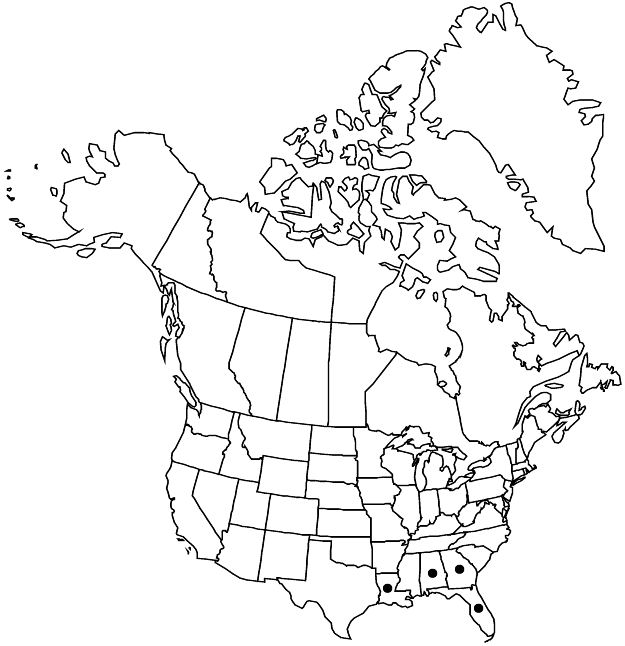Difference between revisions of "Corchorus aestuans"
Syst. Nat. ed. 10, 2: 1079. 1759.
FNA>Volume Importer |
FNA>Volume Importer |
(No difference)
| |
Revision as of 20:15, 24 September 2019
Plants herbs, annual or short-lived perennial. Stems erect to decumbent or ascending, 2–13(–20) dm, puberulent in lines, hairs simple, arched, downturned to irregularly oriented. Leaves: petiole 5–30(–36) mm; blade ovate or broadly ovate to ovate-elliptic, 2–8 cm, base rounded-truncate, margins serrate, one or both of basal pair of teeth sometimes prolonged into caudate-setaceous point 3–5 mm, apex short-acuminate or acute, surfaces sparsely pilose to strigose on veins and lamina. Inflorescences usually solitary flowers, sometimes fasciculate or cymose, 2–3-flowered. Pedicels 2–3 mm. Flowers: sepals narrowly oblong, 3–5 mm, awned, glabrous; petals 4–6 mm; stamens 10–20. Capsules cylindric, wing-angled, wings to 2 mm wide, 3(–4)[–5]-valved, each valve terminated by bifurcate awn 1.5–3 mm, 15–25(–40) × 4–5 mm, glabrous. 2n = 14.
Phenology: Flowering Jul–Sep(–Oct).
Habitat: Roadsides, fallow fields, vacant lots, abandoned road beds, concrete cracks, edges of scrub oak thickets and pine-oak woodlands, lake edges, shady woodlands
Elevation: 0–50 m
Distribution

Ala., Fla., Ga., La., Asia (India), Africa, introduced also in West Indies, Central America, South America, elsewhere in Asia (Japan, Pakistan, Singapore), Pacific Islands (Papua New Guinea), Australia.
Discussion
Apparently the first and perhaps only record of Corchorus aestuans for Alabama is an 1891 collection from ballast ground in Mobile County.
Selected References
None.